Best Feeding Schedule for Autoflowering Plants
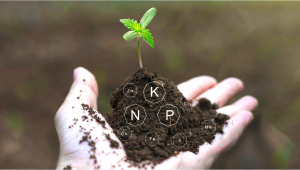
- 1. Intro
- 2. Why choose autoflowers?
- 2. a. But, what exactly are autos, and what makes them unique?
- 2. b. How about autoflowering disadvantages?
- 3. Different types of nutrients
- 4. Nutrients for the seedling stage
- 5. Nutrients for the vegetative stage
- 6. Nutrients for the pre-flowering and flowering stage
- 7. Autoflower nutrient schedule (liquid fertilizers)
- 7. a. Organic nutrient schedule for autos (powdered fertilizers)
- 7. b. Expert opinion by jorge cervantes - co-author:
- 8. Nutrient overfeeding
- 9. Nutrient underfeeding
- 10. Flushing and when to stop feeding
- 11. The best cannabis nutrient brands
- 11. a. Other great options
- 12. In conclusion
Preface
Autoflowering cannabis plants are a marvel in the world of cultivation. Their swift growth cycle and inherent resilience have made them popular among budding enthusiasts and seasoned cultivators. This article, enriched by the insights of Enzo Schillaci and Jorge Cervantes, delves deep into the nuances of nourishing these unique plants, guiding them from their initial sprout to their abundant harvest. As these autoflowers have distinct nutritional needs, understanding their life cycle becomes pivotal to ensuring they reach their zenith.
The article meticulously charts the journey of autoflowering plants, emphasizing the significance of tailoring the feeding schedule to each growth stage. From germination to the flowering phase, the piece provides a comprehensive breakdown of the specific nutrients essential at every step. With its detailed insights, this guide serves as an invaluable resource for those keen on optimizing the health and yield of their autoflowers.
A notable highlight of the article is its focus on the crucial role of pH levels in the growing medium. Achieving and maintaining the proper pH balance is foundational for nutrient absorption in container crops. Any deviations from this balance can lead to nutrient lockouts or deficiencies, potentially hampering the plant's growth. Additionally, the piece sheds light on the pitfalls of overfeeding, offering insights into recognizing and rectifying this common challenge.
For aficionados of organic cultivation, the article offers a deep dive into the world of organic nutrients. These natural alternatives promise enhanced plant health and contribute to the final yield's overall quality and flavor. The emphasis on organic cultivation resonates with the growing global trend towards sustainable and eco-friendly agricultural practices.
The expertise behind this article is genuinely commendable. With his roots in Argentina and a formative journey in Amazonas, Brazil, Enzo Schillaci brings a wealth of knowledge on organic cultivation. His global travels and education at Oaksterdam University have further honed his understanding of the cannabis plant. Enzo's authority in the field is undeniable, with writings featured on platforms like High Times, CannabisTech, and more. Coupled with the vast experience and insights of Jorge Cervantes, renowned for his contributions to cannabis cultivation literature, including "The Cannabis Encyclopedia," this article stands as a testament to the depth of knowledge and passion both authors bring to the table.
1. Intro
All autoflowering cannabis plants, like any other plant, need nutrients to stay alive and grow. Plant nutrients are divided into Macro and Micro. Macronutrients are nutrients plants use in large quantities: Nitrogen (N), Phosphorus (P), and Potassium (K). Micronutrients are the secondary elements and are absorbed in much smaller amounts: Magnesium (Mg), Calcium (Ca), Sulfur (Su), Copper (Cu), Zinc (Zn), Iron (Fe), Manganese (Mn) among others.
Both macro and micronutrients are delivered by watering with mixed nutrients, pre-amended soil, or slow-release powder, when feeding, remember that you can always add more but never take away nutrients.
Most nutrients are designed for photoperiodics, making it easier to over or underfeed and damage your autoflowering plant. That's why we recommend following the best nutrient schedule for autoflowers which has been adapted for you to grow autos using nutrients designed for photos.
- Week 0 Germination - Plain water;
- Week 1 Seedling - Plain water;
- Week 2 Vegetating - ⅛ veg. nutes;
- Week 3 Vegetating - ¼ veg. nutes;
- Week 4 Vegetating - ¼ to ½ veg. nutes;
- Week 5 Pre-flowering - ¼ veg. nutes + ⅛ bloom;
- Week 6 Flowering - ¼ bloom + ⅛ veg. nutes;
- Week 7 Flowering - ¼ bloom nutes;
- Week 8 Flowering - ½ bloom nutes;
- Week 9 Flowering - ½ bloom nutes;
- Week 10 Ripening - ⅛ bloom nutes;
- Week 11 Flushing - Plain water.
2. Why Choose Autoflowers?
Autoflowering cannabis. The new kid on the block. Well, not really anymore. Autos have actually been around for decades, but it’s really only in the last 6 or so years that we have seen the genetics start to really give photoperiod strains their run for their money in terms of cannabinoid percentages and terpene profiles. This development is really thanks to just a few dedicated seed companies and breeders, and without these committed few we may have never seen the true awesomeness that is autoflowering cannabis.
But, what exactly are autos, and what makes them unique?
Autos are unique in a few ways, but there is one key characteristic that really makes them stand by themselves. The name has probably given it away. Thanks to the inbuilt, automatic timer provided by the genetic linage from Cannabis Ruderalis (a totally separate species from the well know Indica and Sativa) - autos will switch from the vegetative growth stage to the flowering stage no matter the lighting conditions. With your regular photoperiod strains, the lifecycle of the plant is decided by the amount of light provided to the plant each day. As long as the plant is under 18 hours + in each 24-hour period, it will stay in the vegetative growth stage. When you are ready for the plant to flower, you simply switch the lighting timing to 12 hours of light per day and the plant does the rest of the work.
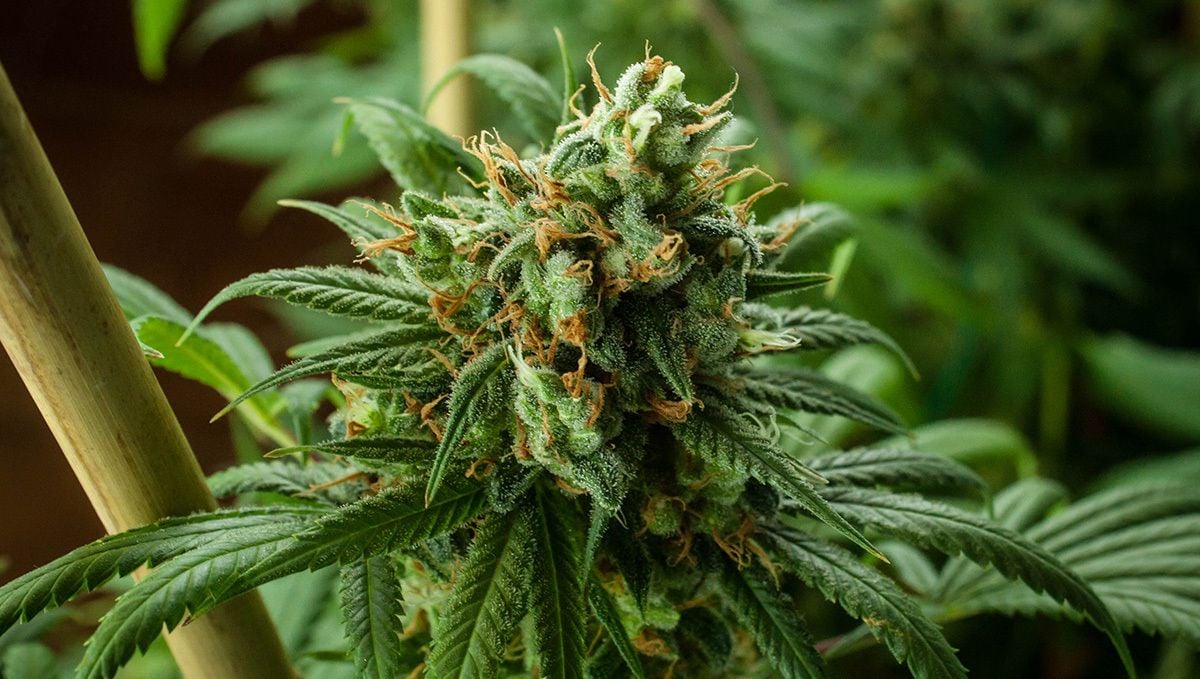
With autos, you can have the lights on 24 hours a day if you like (although we don’t suggest this) and the plant will still start flowering. This offers cultivators a range of advantages, and the pros don’t end with just the ease of lighting. Let us run through all the reasons why many growers are deciding to switch from photos to autos for both indoor and outdoor farms.
Resilient Genetics
Thanks to the cannabis ruderalis genes, autos are super resilient to environmental factors - especially when compared to photoperiod strains. Ruderalis is native to eastern Europe and Siberia which means that certain auto strains can handle much colder temperatures, higher altitudes, a wider humidity range, and more inclement weather in general.
More Discreet
Thanks to their smaller stature, autos are generally a little more discreet than photo strains. Sure, some of the larger auto strains now top 1.5 meters (5 feet) when fully developed, but many stay shorter than 1 meter (3 feet). This makes them perfect for growers looking for a quick, easy-to-hide plant that won’t stand out. They are also great for guerilla grow ops.
Less Nutrients Needed
In general, autoflowering cannabis strains require fewer nutrients than photoperiod plants. This makes the feeding schedule more straightforward and lowers the cost of the grow. Top-shelf nutrients are anything but cheap, so get more bang for your buck by growing autos.
Lighting Quick Lifecycles
The vast majority of photoperiod strains take at least 4 months to go from seed to harvest, with the flowering stage of growth running longer than 10 weeks usually. Autos are much, much quicker. There is a wide range of auto strains available right now that will take less than 10 weeks from seed to harvest.
Simple Light Demands
Unlike photoperiod strains, autos will grow through their entire lifecycle no matter what lighting schedule you put them under. This can really simplify a huge range of factors when growing indoors, especially if you are running multiple strains at once. It can be very difficult to run different photoperiod strains in the same grow room as they may have different lighting needs for different stages.
Easy to Run in a Perpetual Harvest Routine
A pretty common dream for home cultivators is having a never-ending supply of top-quality buds. The easiest way of achieving this goal is by setting up what is commonly referred to as a perpetual harvest routine. This is where you stagger the termination of your plants so you can harvest a couple every 2 to 4 weeks. This can be a pain in the ass if you are growing photos, as they need totally different light timings for veg and flower. With autos, you can have plants in any stage of growth in the same grow room with zero issues.
No Need to Worry About Light Leaks
This advantage ties back to the ease of lighting, but it is a big enough pro that it deserves its own section. Light leaks can lead to a huge range of issues with photo plants, meaning that grow rooms need to be perfectly sealed so no extra light can creep in during the dark period.
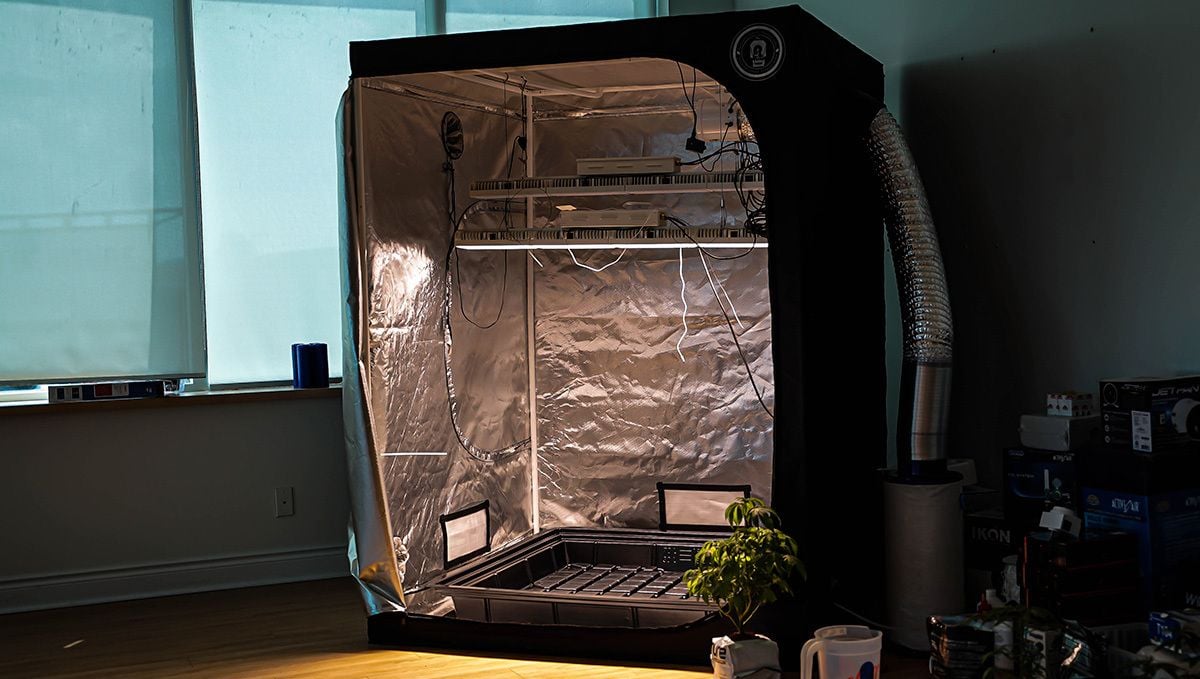
Light leaks are one of the most common causes of plants turning into hermies, which can quickly lead to the end of a crop. Autos simply done have these issues at all. Sure, other factors can lead to hermie issues, but light leaks pose zero threat to autoflowering cannabis strains.
High CBD Percentages
Autos genetic ancestor Cannabis Ruderalis has a naturally higher percentage of CBD than the Sativa or Indica species. That’s not to say that Sativa and Indica don’t have CBD present, just that autos generally have a slightly elevated CBD percentage when compared to photo strains.
Perfect for Novice and Experienced Cultivators Alike
Thanks to all of the advantages listed above, autoflowering cannabis strains are a great introduction to the world of cannabis cultivation. They offer easy growing with great yield potential, and these days the high THC and CBD percentages mean they truly can compete with photoperiod strains. Even long-standing, highly experienced cultivators are making the switch over.
How about autoflowering disadvantages?
Sure, there are a few key ways where autos simply cannot stack up to photoperiod strains, but this is very dependent on how you want to grow.
Autos Can Not Be Cloned
Thanks to that handy inbuilt timer, unfortunately, auto strains simply cannot be cloned. Any cuttings taken will continue on the same timing schedule as the mother plant, which will mean that clones simply do not have time to grow before flowering begins. Thankfully, the quick lifecycle means that you can go from seed to harvest in the same time period as a normal cloning schedule, removing the need for cloning at all.
No High-Stress Training
High-Stress Training Techniques (HST) can produce amazing results with photoperiod strains. Techniques such as topping, fimming, super cropping, monster cropping, and schwazzing have all; popped up in the last few decades, but they are not advised for autoflowering strains. Autos just do no have enough time to bounce back from the stress, which means that using these types of plant training methods will most likely result in lower yields with less potency. For autos, stick to Low-Stress Training (LST) techniques to achieve the best results. A simple mix of the tie-down method and some scrogging can boost your final yield by as much as 25% in terms of weight.
3. Different Types of Nutrients
Nutrients can come in different forms. The most common are diluted in water, mixed with soil, and in powder form to be used as a slow-release top dressing or to be mixed with the medium. Usually, beginner growers ask What are the best nutrients? That will depend on your preference and method of growing, there are basically two types: organic and inorganic nutrients and there's a big difference between them, both of them can come in the three different forms we talked above but work in completely different ways.
Organic vs Inorganic
Organic focuses on creating and maintaining a rich medium filled with microorganisms. By using organic nutrients you’re not feeding the plant directly, you are enriching the medium where microorganisms present to feed on the nutrients, breaking them down and making it easy for the plant to absorb.
Because you’re not feeding the plant directly, she can decide when and which nutrients to absorb so unless you do it on purpose, it’s really hard to have problems related to an excess or lack of nutrients.
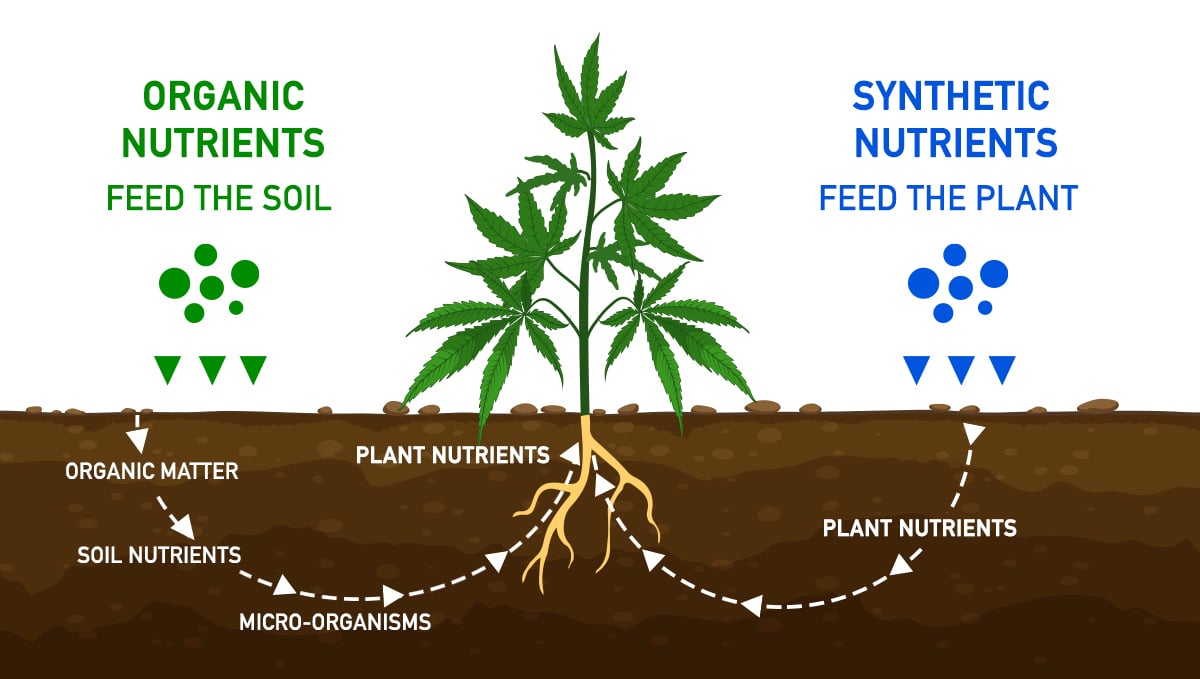
Inorganic nutrients work by delivering an exact amount of nutrients to the roots. To be able to do this without any damage to your plant you must really know the necessities of your autoflower. The nutrients needed for optimal growth vary from strain to strain so it’s really hard to know exactly what and when to feed. Usually, you start experimenting and if you see signs of underdevelopment or deficiencies you feed a little bit more.
On top of that, you will have to adjust the amount given to an autoflower to avoid wasting nutrients (organic) and to avoid burning your plants (inorganic). Manufacturers usually make available instructions with an approximate schedule and amounts for the products they sell but they usually are directed to photoperiodic plants. Having that in mind, we recommend always starting with half the recommended amount with autoflowers.
Slow-release
Slow-release nutrients can come in pellets or in powder form. Usually used as a top dressing or pre-mixed with soil, this is the simplest way of feeding because it slowly releases nutrients when watering. So you don’t have to worry about feeding your plant until harvest unless you see any signs of deficiency.
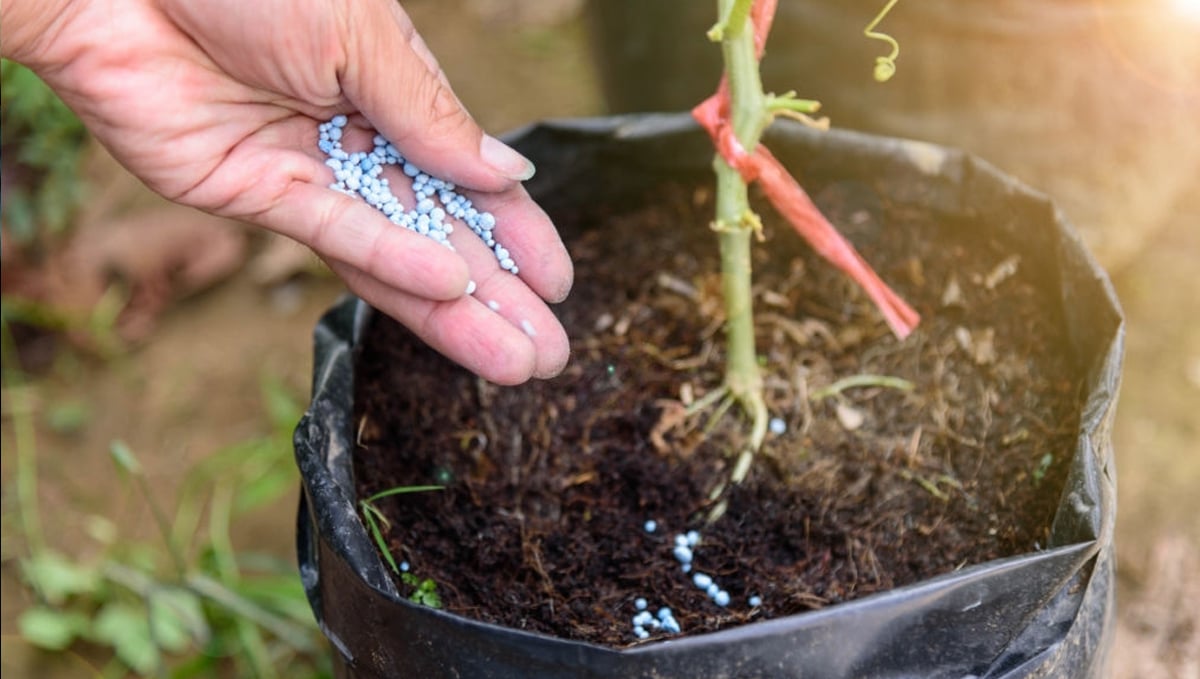
The best way to water when using slow-release feeding is water more often with less water, this way the pellets or powder will dissolve faster and you won’t have any problems. This way of feeding also comes with instructions directed for photoperiodic plants so with autoflowers you should (generally) use half of the recommended amount.
Tip
This way of feeding takes a couple of days to dissolve the pellets or powder if you water every couple of days. If you see signs of deficiency or you notice your autoflower is hungry, you can use a small amount of water-soluble nutrients to fix this immediately and give the slow-release nutrients a bit more time to dissolve.
Bottled nutrients
Bottled nutrients are what everybody knows, grower, or not. These fertilizers come in liquid form and are usually synthetic, and relatively cheap due to the wide selection available. Synthetic nutrients are popular amongst all types of growers, even though they’re not s safe as organic nutrients, you can effectively grow and harvest your plants without major problems. You can find a lot of different brands and their quality may differ but all fertilizers will contain basically the same elements and ratio for the vegetative (3-1-2) and the blooming stage (1-2-3), so it’s just a matter of preference.
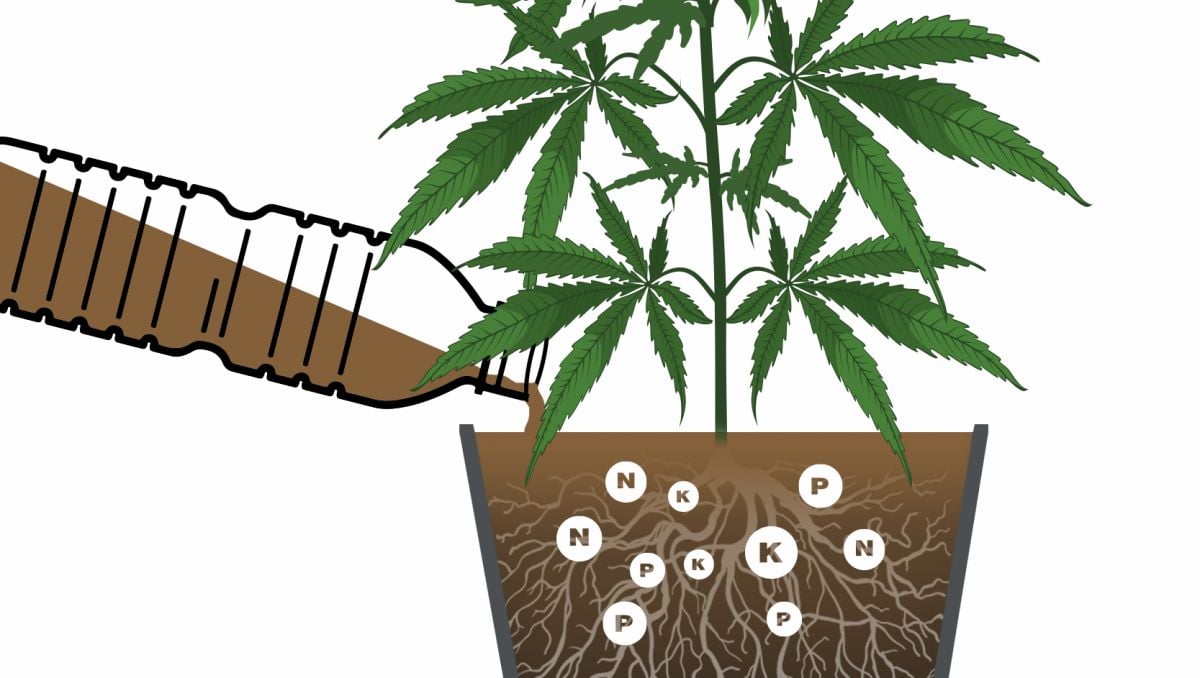
Have in mind that unlike organic feeding which focuses in creating an ecosystem in the soil, synthetic nutrients feed the roots directly so you can easily burn your autos, you should always start with a smaller dose and increase it gradually, this way you can check the signs your plant gives you and can adjust the amount of nutrients to your plant’s needs, avoid wasting nutrients and most importantly, avoid burning your plants.
Remember that because these nutrients are synthetic they’ll most likely kill the microorganisms present in the soil so (depending on the medium) you’ll have to provide all the micronutrients too, like Calcium and Magnesium, for example.
We recommend using organic nutrients when possible, this way you’ll be maintaining an ecosystem similar to what you find in nature, resulting in better tasting flowers and avoid overfeeding your autos.
4. Nutrients for the Seedling Stage
The seedling sprouts with two little leaves called Cotyledons. These leaves provide what the plant needs to survive until the first set of true leaves appear. The first two weeks of cannabis growth are the most crucial because the little seedling is establishing its root system and it is very fragile.
When to start feeding?
If you're feeding in the seedling stage you must be very careful not to overfeed. You can start your autoflower with 1/8 of the recommended nutrients or better yet, just give the plant water for that first couple of weeks. If you overfeed your plant at this stage of growth it is highly possible that the baby plant won’t survive or if it manages to survive then the overall yield of the damaged autoflower will be greatly diminished.

Tip
Water-soluble feeding gives the plant access to the nutrients immediately.
If you are using mediums with added nutrients then you don’t need to feed the plant for the first 2-3 weeks (until the pre-flowering stage). So you can relax and forget about those nutrients at this stage of its growth.
Tip
Always read the recommendations as amended mediums contain different amounts of nutrients. Some may have the amount needed for the first weeks but others can have the amount needed up to the pre-flowering stage.
5. Nutrients for the Vegetative Stage
Photoperiodic cannabis plants have a vegetative growth stage but autoflower plants go from the seedling phase straight to flowering without the need to change the light cycle.
Some growers believe that the time when the little seedling gets its true set of leaves until it starts flowering is the vegetative growth stage for autoflowers. But it really doesn’t matter how we call this stage because we need to feed it just like a regular photo-sensitive plant in its vegetative stage.
When we see that our autoflower plant starts to grow fast we need to start giving it more nutrients. Usually, it is best to give half of the recommended dose of nutrients, but if the plant gets really bushy you can give it a full dose.
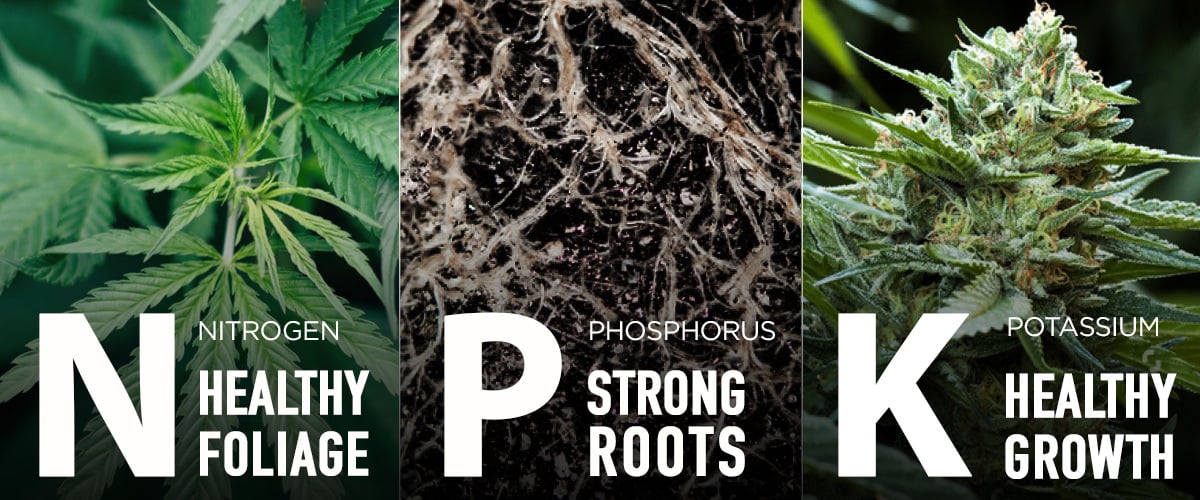
At the vegetative stage, cannabis needs a lot of Nitrogen (N) and a decent amount of phosphorus (P) and potassium (K).
No matter what the percentage of the other nutrients is, just make sure that Nitrogen (N) is available more than those other two elements. Autoflower cannabis also needs those secondary nutrients but commercial fertilizers usually have a mix of the other nutrients your plant needs in the solution.
6. Nutrients for the Pre-Flowering and Flowering Stage
After a couple of weeks in the vegetative stage, your auto will be mature enough to start developing flowers, when this happens your plants will start to develop pistils, which are a sign that your plant is entering the pre-flowering stage.
When to switch to bloom nutes?
When the first pre-flowers start to appear you need to change your feeding to a mix of half vegetative and half blooming nutrients. You need to slowly start introducing more Phosphorus (P) and Potassium (K).
Phosphorus is essential for bud production and has to be available when your autoflower enters the flowering stage. Once your autoflower starts really producing bud you should start feeding only blooming nutrients.
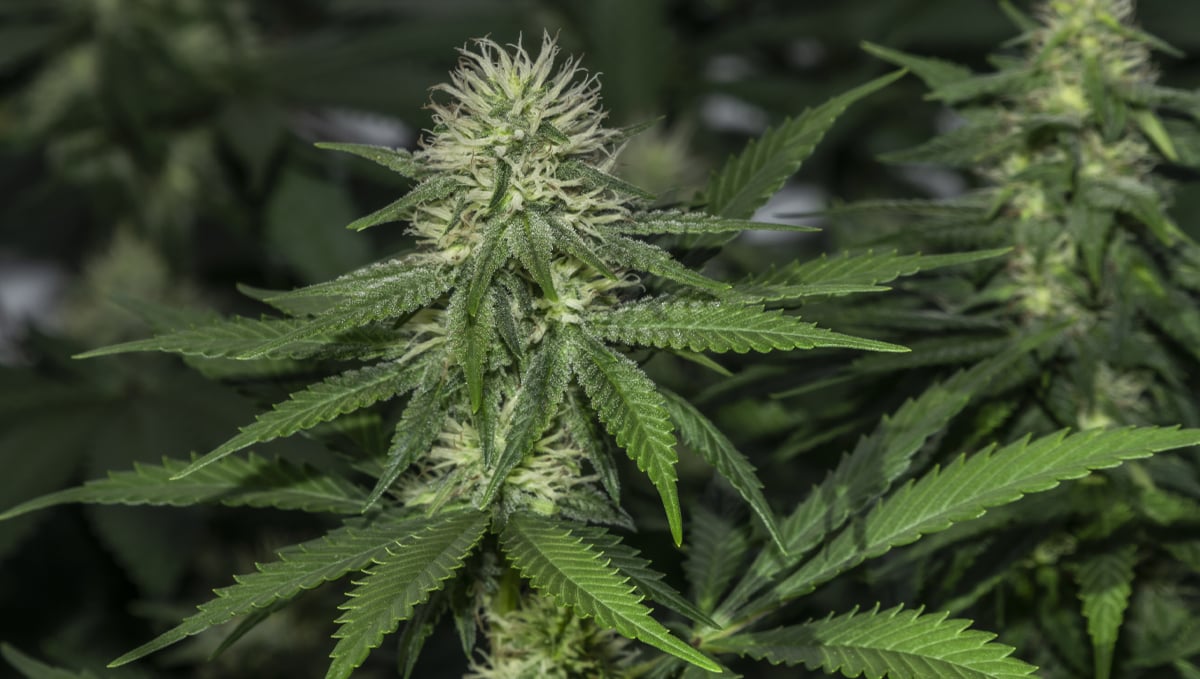
Some growers think that you must strictly go by the schedule when you are feeding your plants and if you don’t change your fertilizer your plant will not grow properly. But the truth is that almost any fertilizer will do just fine. You can be very precise and if you have a lot of experience you can boost your yield with appropriate fertilizers but for beginners and medium level autoflower growers it is not as crucial. It is always best to give your plants less food than overfeed them.
7. Autoflower Nutrient Schedule (Liquid fertilizers)
Cannabis plants don’t like to be overfed and they can easily get burned because of that, the amount needed for an autoflower depends on the strain and growing environment. The following schedule should be adjusted depending on when your plant starts flowering.
| Autoflower Feeding Chart for Inert Mediums | ||
|---|---|---|
| Week | Stage | Nutrients |
| 1 | Seedling | Water |
| 2 | Vegetative stage | ⅛ vegetative nutrients |
| 3 | Vegetative stage | ¼ vegetative nutrients |
| 4 | Pre-flowering stage | ½ Vegetative nutrients |
| 5 | First signs of flowers | ¼ bloom + ⅛ vegetative nutrients |
| 6 | Flowering stage | ½ bloom nutrients |
| 7 | Flowering stage | ½ bloom nutrients |
| 8 | Flowering & ripening | Flush |
| 9 | Ripening & harvest | Flush |
Have in mind that more nutrients does not result in more growth, some plants are more sensitive to nutrients. Overfeeding your autoflowers can affect your harvest because they will need time to recover and when this happens (especially in the flowering stage), it can take up to 7 days for them to recover and continue growing normally.
Note:
This schedule is based on amounts recommended for photoperiodic plants, that’s why we use ½, ¼, and ⅛ amounts. If you were to use a medium with pre-added nutrients, then you should only water until you see signs of pre-flowering (around week 4) and only then start feeding following this schedule starting from the Pre-flowering stage.
Organic Nutrient Schedule for Autos (Powdered Fertilizers)
For those who are just starting to grow cannabis and found the table above a bit hard to understand, here’s a table that will allow you to grow autoflowers organically while keeping things simple.
We recommend using the best quality fertilizers you can find, obviously, it’s hard to find them in some places so you can use whatever you want as long as it contains Nitrogen, Phosphorus, and Potassium in the ratios mentioned below.
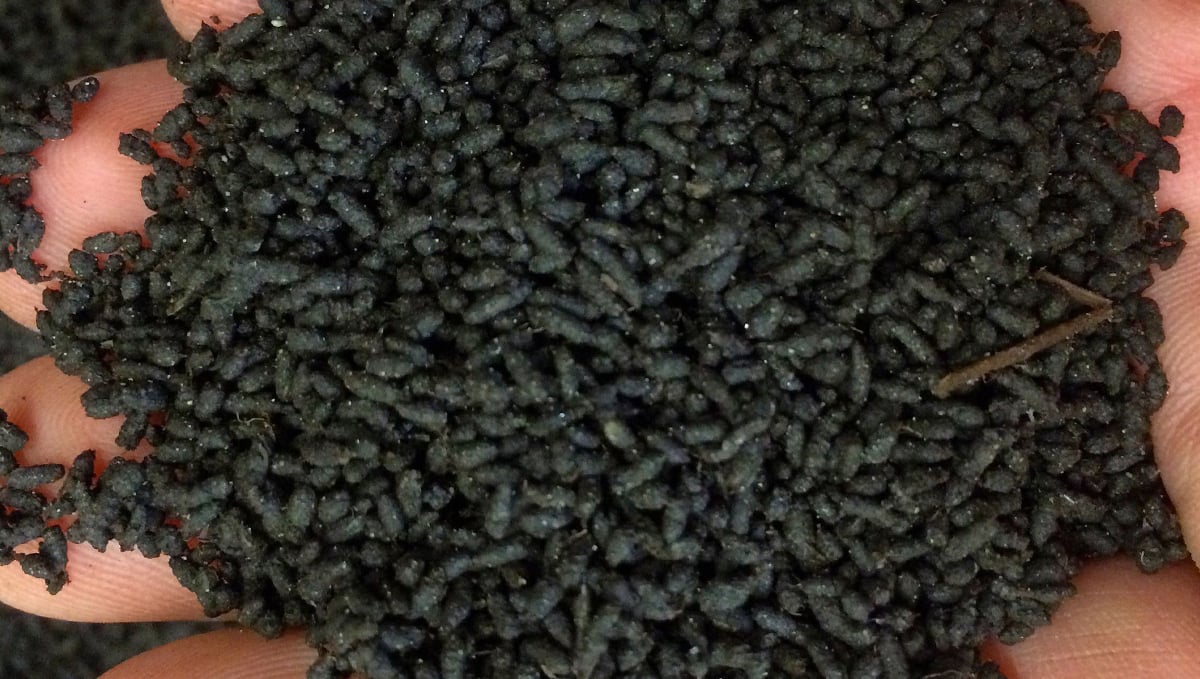
Also, depending on the water you will have to provide micronutrients so it’s recommended to use fertilizers that contain the trace minerals your plants need if you are using filtered water.
If you don’t know which brands to use, you should look into Gaia Green, Down to earth, and Dr. Earth which are the most popular brands in the market but, as mentioned before, you can use whatever you want and anything you can find as long as they’re 100% organic and respect the NPK ratios.
You’ll need:
- 4-4-4 All-purpose fertilizer
- 2-8-4 Bloom fertilizer
- Organic worm castings
This method consists of pre-amending the substrate and then top dressing it every 2-3 weeks, this can change according to your growing conditions because a higher temperature can increase the speed at which your plants perform photosynthesis and the substrate may run out of nutrients earlier.
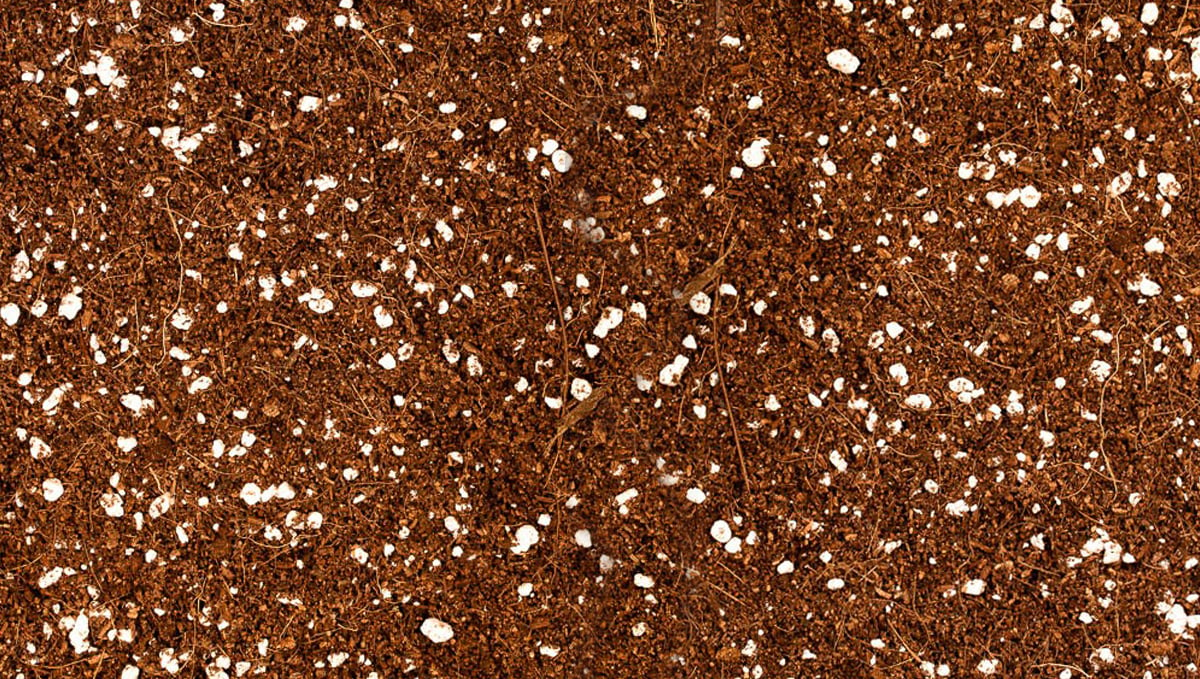
Also, some strains may need more nutrients than others so that’s where the worm castings come in; Worm castings provide a little amount of all the nutrients your plants will need to continue growing without deficiencies until it’s time for the top dressing.
Substrate
This type of feeding can be done in any type of substrate you prefer to grow in but for better results, we recommend using the following mix:
- Coco fiber 90%
- Perlite 10%
Now, as said before you can use whatever you want but this mixture has shown great results so this is what we recommend, obviously, you can and should experiment with other substrates that suit you better.
Have in mind that the percentage recommended below is based on the amounts described on the package by the manufacturer!
Vegetative stage (week 1 - 4)
This feeding schedule consists of using powdered nutrients so you have to pre-amend your soil with:
- 4-4-4 All-purpose fertilizer - 75%
- 2-8-4 Bloom fertilizer - 25%
After you’ve mixed the fertilizer in the soil you can go ahead and plant your auto seed in the pot for germination (or after it has germinated); These are slow-release amendments that take around 1 week for the nutrients to be available so they won’t burn your seedling.
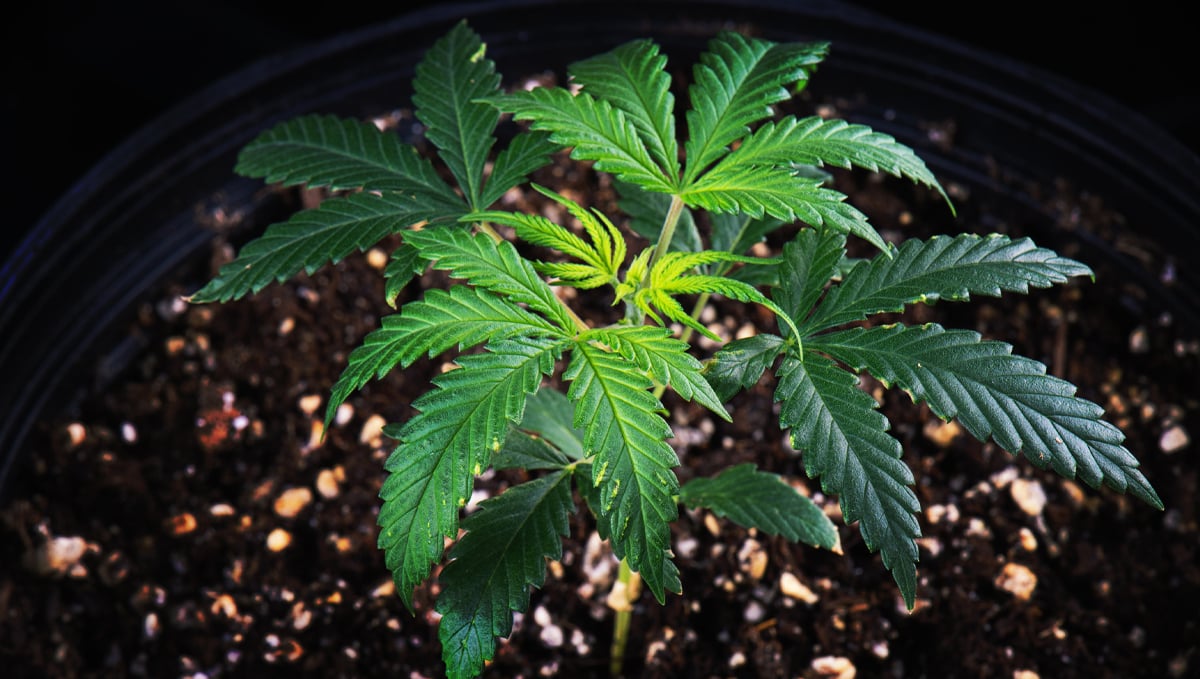
Remember that all cultivars are different so if your plants get hungry before the pre-flowering feeding you can go ahead and add the Organic worm castings as a top dress feeding, but it’s most likely that it won’t be needed with autoflowers.
Pre-flowering stage (week 5 - 8)
Once the first white hairs have appeared, you can go ahead and top dress the substrate with:
- 4-4-4 All-purpose fertilizer - 50%
- 2-8-4 Bloom fertilizer - 50%
Have in mind that you have to rub the powdered fertilizer gently onto the soil until it mixes completely and after it’s all mixed, water so the fertilizer starts breaking down.
Flowering (week 8 - 10)
Around week 8 (approx. 2 weeks before harvest) your plant will need that final push to fatten up the buds properly so at this stage you should feed your plant with the following ratio:
- 4-4-4 All-purpose fertilizer - 30%
- 2-8-4 Bloom fertilizer - 70%
This final feeding will provide the nutrients needed for your plant to develop dense buds and finish the grow cycle without any problems.
Due to these fertilizers being 100% organic, flushing is optional but depending on which fertilizers you’re using you will have to flush to enhance the aroma and flavor of your buds.

Expert Opinion by Jorge Cervantes - co-author:
Nourishing cannabis plants, particularly autoflowering strains, is like orchestrating a musical masterpiece. Each nutrient has a role, synergizing with others to produce a peak of growth, health, and potency. Autoflowers, given their brisk life cycle, pose a distinct challenge. Their swift shift from vegetative to flowering stages means there's a limited timeframe to perfect their nutrition. Over my extensive career, I've encountered myriad feeding schedules, some triumphant, others less effective. The secret is discerning the plant's requirements at every phase and customizing the feeding strategy to match.
In this piece, we have aimed to outline a feeding schedule that's both thorough and flexible. It's rooted in tangible evidence, decades of direct experience, and a profound grasp of plant biology. However, it's essential to remember that while this guide lays a robust groundwork, the ultimate feeding schedule resonates with your plant's distinct demands. It's imperative to be attuned to your plants, decipher their cues, and modify your feeding strategy based on their feedback. This harmony between knowledge and instinct paves the way for genuinely remarkable yields.
I encourage you to immerse yourself in this guide, assimilate its wisdom, and employ it as a foundation for your cultivation endeavors. With the proper cannabis cultivation knowledge and a discerning eye, you can devise a feeding plan that propels your autoflowers to their zenith, resulting in rich and potent harvests. Cheers to the artistry and science of cannabis cultivation!
8. Nutrient overfeeding
Overfeeding is the result of a too strong solution, as said above, more nutrients don't always result in more growth and some plants are more sensitive than others.
When you don't measure the dose of nutrients that go in your solution, you can overfeed your plants and they will surely show signs of toxicity. Even though it's a common problem amongst growers, the problems that come along are really serious and can end up killing your plants.
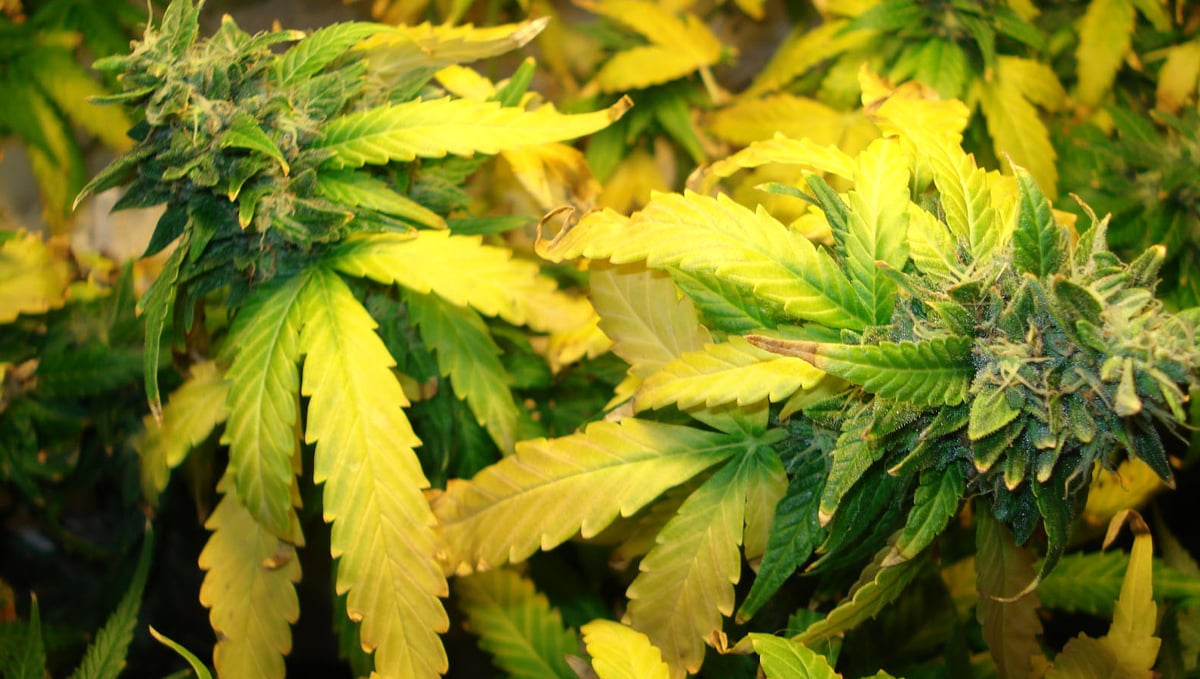
Signs of overfeeding are yellowing or yellow spots on the leaves and can be more serious if you don't fix it, if you continue to feed a strong solution the leaves will start to brown, get crispy and die, this results in a stressed plant which will grow slower, can end up producing lower yields and ultimately die, so if you see signs of toxicities you should flush right away, give your plant a couple of days to recover and start feeding again with a lower dose. Have in mind that you can easily avoid this by using our feeding schedule for cannabis above or just by simply using a lower dose than recommended and increase it gradually.
|
Nutrient Overfeeding Symptoms |
|
|---|---|
|
Nitrogen
|
Greener leaves, weak branches, less water uptake. |
|
Phosphorus
|
Burned tips, thin leaves, spots on leaves. |
|
Potassium
|
Burned leaf tips, curling of lower leaves, spots on leaves. |
|
Calcium
|
Stunted growth, wilting leaves. |
|
Magnesium
|
Dark green leaves, stunted growth. |
9. Nutrient underfeeding
Underfeeding can also hurt your plants, if you fail to provide the nutrients your autos need to produce sugars they won't be able to grow and will show signs similar to the symptoms of overfeeding. Even though some plants can grow well without nutrients, it's recommended you provide at least a minimum amount to make sure your harvest meets your expectations.
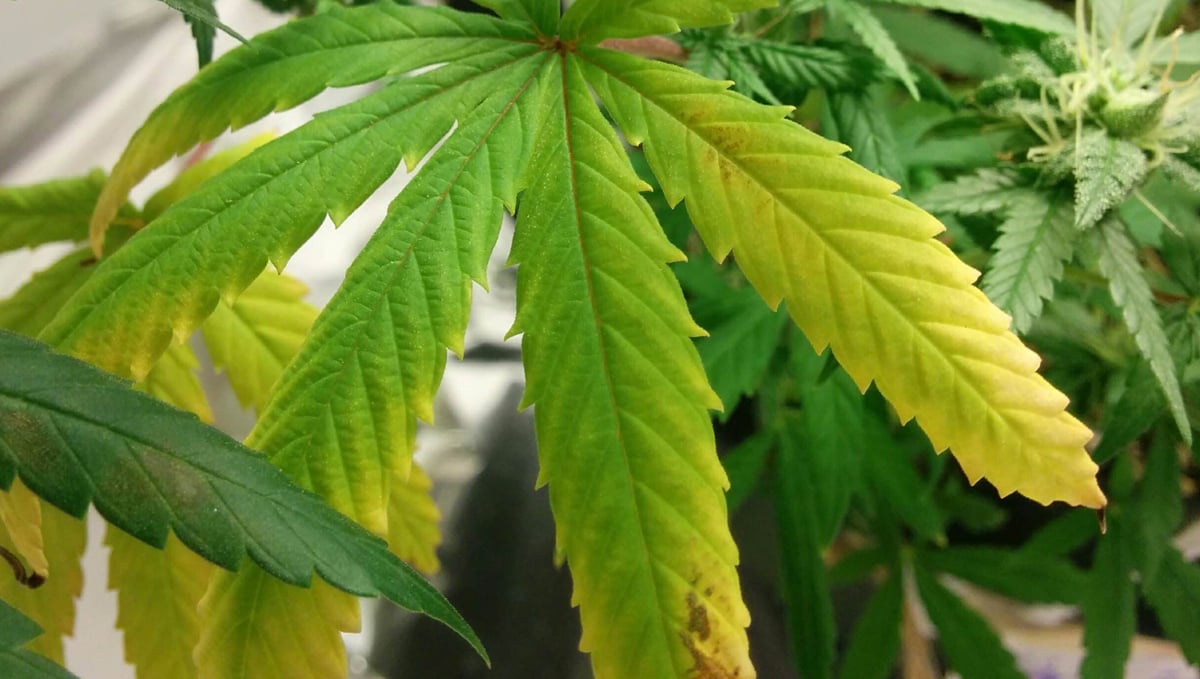
Remember that nutrients are extremely important so even though you may be afraid of overfeeding your plants, there's no need to be, it's normal for beginner growers to burn plants, even more experienced growers can burn plants when they're trying a new nutrient brand so don't worry.
Just make sure you learn from your mistakes and try to adjust the dose until you reach the optimal amount.
|
Nutrient Underfeeding Symptoms |
|
|---|---|
|
Nitrogen
|
Leaves turn yellow, curled leaves, small leaves. |
|
Phosphorus
|
Dark spots on leaves, curled leaves, slow growth. |
|
Potassium
|
Weak branches, rusty color on leaves, slow flowering. |
|
Calcium
|
Curling on lower leaves, slow flowering, yellowish-brown spots on leaves. |
|
Magnesium
|
Dried out leaves, rust spots on leaves, sickly appearance. |
10. Flushing and when to stop feeding
Flushing consists of washing the excess nutrients from the roots and medium 1-3 weeks before harvesting. As you may know, all cannabis plants absorb nutrients to grow, when a plant absorbs nutrients there can be a nutrient build-up, although this is more common with synthetic nutrients, it can also happen with organic nutes. Failing to flush properly can easily affect your buds, usually, plants that have not been flushed have a less potent smell and are harsher to the throat so if you want the flavor and smell of your buds to stand out, and smoother smoke, we recommend flushing with plain water or flushing products which can be found in grow shops.
11. The Best Cannabis Nutrient Brands
Thanks to the current wave of cannabis legalization, the list of brands producing top-class nutrients for cannabis cultivation is only getting bigger. And while having a huge range of options is never a bad thing, it can make choosing the right nutrient for your to grow a little tricky. Which brand is best? Which additive will make those buds drip with sticky-icky goodness? Let's take an in-depth look at the leading brands, and all the best products currently available!
Advanced Nutrients
Advanced nutrients have been around since 1999, and to say they have dominated the market would be just a slight understatement. A true driving force behind nutrient evolution, they’ve developed some of the most innovative nutrient formulas the industry has seen to date, and are constantly working on new products to ensure the best possible outcomes for all styles of cannabis cultivation. They took out the top awards for the Best Cannabis Nutrient Brand 2022 from the growers at Grow Diaries. This is one of the most prestigious awards that a nutrient company can take out, as it is voted on by a huge user base - Grow Diaries is the largest grow journal website, and the awards are open for voting by all who post on the site. Sure, awards handed out at cannabis competitions such as The High Times Cannabis Cup and the like may come with a certain sense of reverence, but user-based awards give us an insight into what the cultivation community as a whole really thinks. Advanced Nutrients also won Best Nutrients 2022 at Spannabis - Spain's biggest annual cannabis competition.
They focus on providing the best in cannabis nutrients, with the full range backed by science-based research. They were the first nutrient company to partner with a university (the University of Mississippi) and dive deep into the genetic potential of cannabis. Their nutrient lines are focused on optimizing nutrient delivery through a variety of products, from their flagship 3-part nutrient line, Big Bud, Bud Ignitor, and Bud Candy - to their Voodoo Juice nutrient line which specifically targets microbial life in your root zone. It should come as no surprise that these nutrient lines brought Advanced Nutrients to the top of the nutrient market. They are constantly innovating, and remain the nutrient of choice for many professional growers.
Ultimately, Advanced Nutrients is an amazing nutrient range backed by science and research and is a great nutrient choice for any grower. Whether you are looking to take your first steps in nutrient use, or are an experienced grower looking for the best nutrient lines, Advanced Nutrients is certainly a nutrient line to consider.
Canna Nutrients
Canna is another nutrient company that has been around since the beginning and has been making nutrient lines for almost as long as Advanced Nutrients. Canna nutrient lines are specifically designed for optimum nutrient delivery, and they focus on providing the best possible nutrient formulations to help promote maximum nutrient uptake and nutrient uptake efficiency. As well as their nutrient lines, they offer a range of growing mediums and additives to help your nutrient setup. Canna nutrient lines are specifically designed to work together, and when used together with their grow mediums and additives, they provide nutrient delivery that is second to none. Their nutrient lines are backed by science and field testing, and they have developed nutrient formulas specifically for cannabis cultivation.
Canna nutrient lines are a great nutrient choice for cannabis growers, as their nutrient formulas are specifically designed to help promote maximum nutrient uptake and nutrient uptake efficiency. This means that your plants will be able to optimally utilize all the nutrients available in the nutrient tank, which will result in bigger yields, better quality buds, and improved nutrient efficiency. Therefore, Canna nutrient lines are definitely a nutrient line to consider when it comes to nutrient choice for cannabis cultivation. The nutrient lines are backed by science and field testing, and they provide nutrient delivery that is second to none. Additionally, they offer a range of growing mediums and additives that can help your nutrient setup. With Canna nutrient lines, you will be sure to get great nutrient delivery and nutrient uptake efficiency for your cannabis plants.
Fox Farms
Fox Farms is one of the oldest nutrient and substrate companies and has been blessing cannabis cultivators with top-shelf products since 1984. Born in the cannabis-growing hotbed of Humbolt County, up in the Pacific North-West, Fox Farms set out to provide cultivators with a product that was, up until that time, unseen and unavailable to cannabis farmers - an unsterilized soil blend that was specifically made with cannabis in mind.
They offer nutrient lines specifically designed for hydroponic systems as well as nutrient formulations for soil-grown plants. Fox Farm nutrient lines are highly effective and nutrient uptake efficiency is maximized with their nutrient formulations. They also offer a range of additives to help you dial in nutrient levels and get the best nutrient delivery possible. Fox Farms nutrient lines are an excellent nutrient choice for cannabis cultivation as they have been tried and tested by thousands of farmers not just in the Humbolt County area, but worldwide. Spain is the biggest producer of cannabis in Europe, and Fox Farms is the highest-selling nutrient company in Spain - speaks for itself, really. While the Fox Farm range is fantastic, they really excel for soil and coco-based applications.
General Hydroponics
Their name might give it away slightly, but General Hydroponics have been true pioneers of the - you guessed it - hydro game since day one. Their easy-to-use and simple nutrient schedule have been a top seller since the day it was released onto the market, and it's obvious why. It just works, and it offers amazing results.
General Hydroponics nutrient lines are a great nutrient choice for cannabis cultivation. They are specifically designed to provide optimum nutrient delivery and nutrient uptake efficiency, which will help promote maximum nutrient uptake and nutrient uptake efficiency in your plants. General Hydroponics nutrient lines have been developed with care, precision, and scientific principles in mind. This means that they provide nutrient delivery that is second to none. Overall, General Hydroponics nutrient lines are an excellent nutrient choice for cannabis cultivation as they provide nutrient delivery and nutrient uptake efficiency that is second to none. Additionally, they offer a range of growing mediums and additives that can help your nutrient setup.
House & Garden
House & Garden are one of the oldest nutrient companies in the world, and one of the very first to focus on cannabis-specific nutes. All the way back in 1900, William Van De Zwaan - a lifelong horticulturalists and lover of all things plant-based from The Netherlands- decided to start implementing the scientific method to rose breeding. The result was some of the best roses the world had ever seen, and they quickly became the sole flower supplier for the Vatican. 25 years ago, they turned their attention to cannabis cultivation-specific nutrients, and now produce some of the highest-selling nutes and additives on the market.
House & Garden nutrient lines offer nutrient delivery that is second to none, as they provide a nutrient uptake efficiency that is unmatched. They also come with an easy-to-use nutrient schedule that can easily be tailored to your needs. The line of growth stimulators is some of the best available, with the likes of Roots Excelurator and Shooting Powder taking out a bunch of top awards since being released.
Their pre-buffered coco substrate mix is our go-to, and the coco nutes produced by House & Garden are actually the first bottled coco nutes we ever used. They offer far superior results to some of the competitor's offerings and are our first recommended products for coco-based cultivation. They also offer starter kits which are packed full of literally everything a cultivator could ever need, at a heavily discounted price. Perfect for anyone just starting out and wanting to stock the shelves with all the essentials.
OTHER GREAT OPTIONS
One of the best things about the nutrient market is the amount of competition. The list is almost never-ending, and although the above five are our go-to's, there are just so many other options available to cultivators today.
- Dyna-Gro
- Botanicare
- Cyco
- SHOGUN
- Xpert
- Kyle Kushman’s Vegamatrix
The list truly does just go on and on. What we suggest is getting down to your local hydro supplier, and having a nice long chat about all the options in stock. The guys working and running these stores are usually extremely knowledgeable, and welcoming. They also usually have a nutrient scheme that offers discounts, so it might be worth stocking up with mulitple products. Whichever nutrient line you choose to go for, make sure you do your own research and due diligence. Every nutrient will bring different benefits to the table, but ultimately each one is an investment in the future harvest of your plant.
12. In Conclusion
Autoflower watering should be taking with caution, not only autoflowers but all plants are different in one way or another. You can follow an autoflower nutrient schedule like the one we provided above but the optimal way to feed your plants is by understanding the environment you’re growing in and the cultivar you’re growing. Our Banana Purple Punch Auto, for example, is a sturdy grower and will do perfectly fine without nutrients.
But with proper usage and good quality nutrients, she will make absolute marvels. The amount of water and nutrients an autoflower needs depends on humidity, temperature, type of medium, air circulation, and genetics so we recommend spending a little bit of time with your plants daily. Paying attention to the little details and signs that your plant gives you, is where you make the difference between growing an okay plant and a beautiful, 100% healthy one. We promise she will give back by growing dense and very frosty flowers.
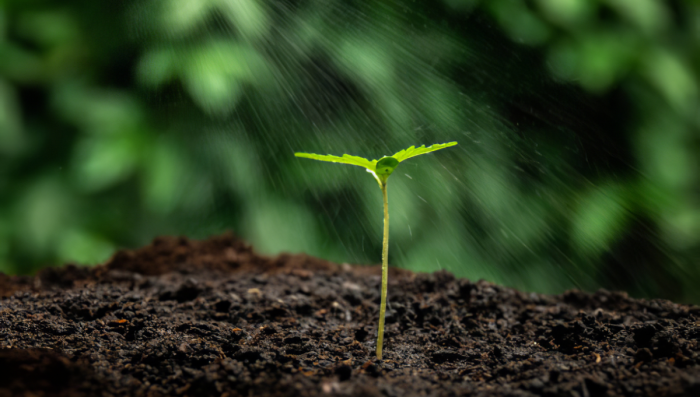







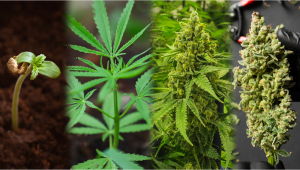
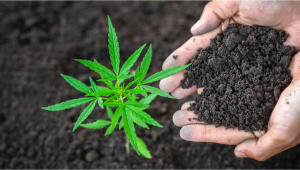



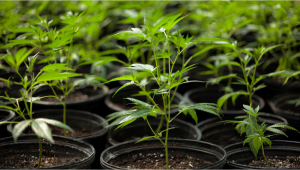

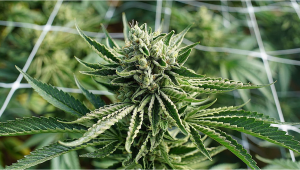
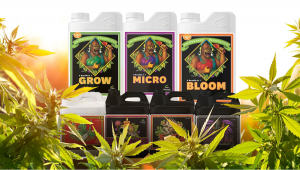
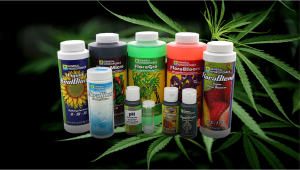


Comments